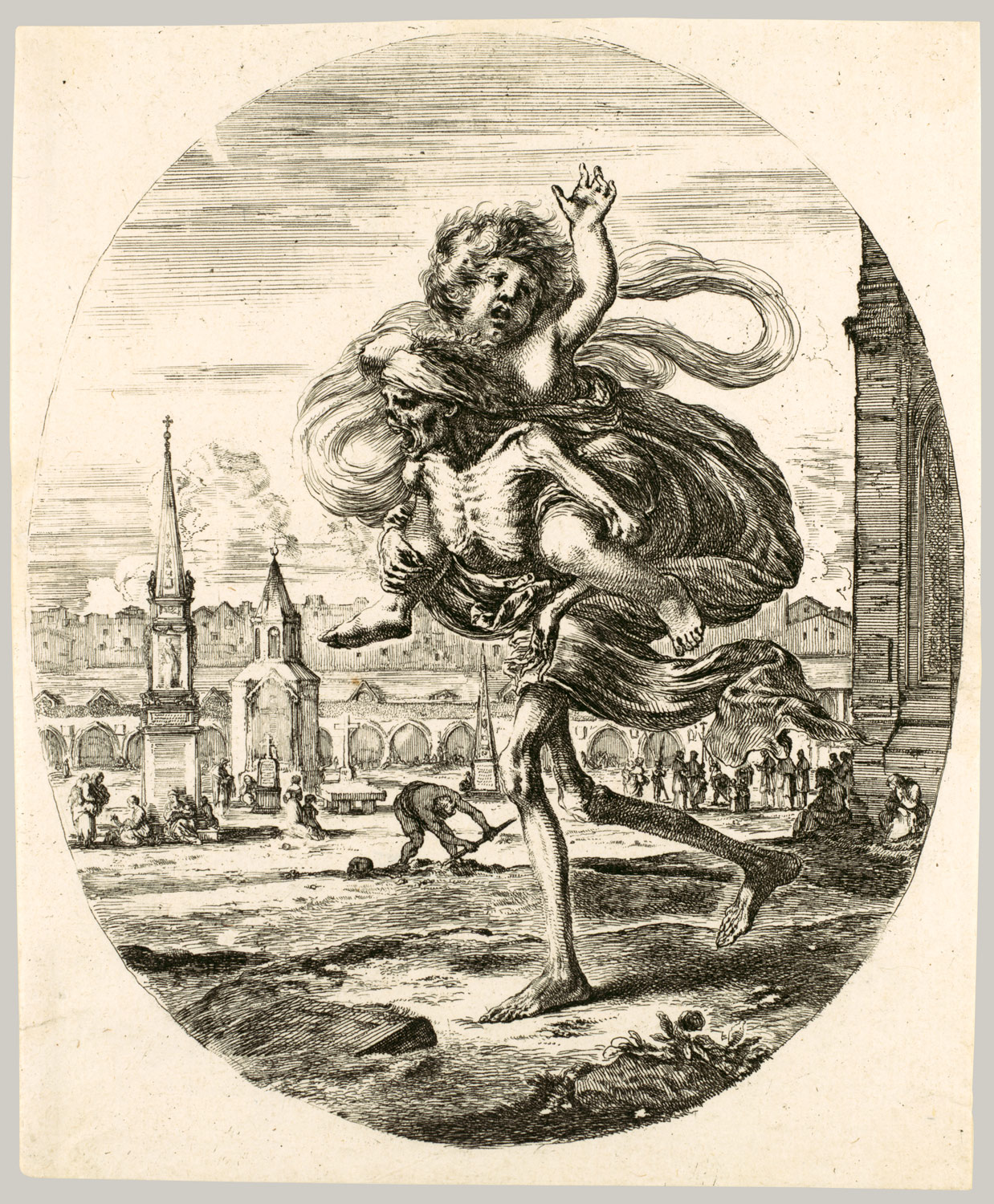EBERBACH HEIDELBERG
POLYGRAPHICUM catalogues & sales POLYGRAFICUM
Wildschwein flüchtig
acquaforte.aguafuerte.akwaforta.eau-forte.etching.ets.radierung
Grisaille
1800
HAMBURGER KUNSTHALLE
GETTY MUSEUM MALIBU
Design for an Ewer
Stefano della Bella
| Dates | 1610 - 1664 |
| Roles | Artist |
| Nationality | Italian |
Etcher and draftsman Stefano della Bella worked ceaselessly creating thousands of drawings and prints. Like a devoted photographer intent on capturing the major events of his time, della Bella recorded the lavish theatrical pageants of Florence's nobility, daily life in Rome and Paris, and the battlefield realities of the Thirty Years War.
Della Bella began his career in the studio of a goldsmith, but apart from this early apprenticeship, della Bella was basically self-taught. Before the age of twenty, he had allied himself with the powerful Medici court, which provided him with patronage throughout his career. With the Medici's support, in 1633, della Bella traveled to Rome where he remained until 1639. During these six years, he honed his drawing skills. He largely avoided studios and worked outdoors, recording ancient and modern buildings, the countryside, public spectacles, and the daily activities of the Roman people. Della Bella would later mine his sketchbooks for figures and backgrounds for his prints. Supported by the Floretine ambassador, in 1639, Della Bella relocated to Paris. For the French nobility, della Bella created a diverse range of prints including battle scenes, architecture, and animals. He moved effortlessly between large, topographically precise landscapes and fanciful works commissioned by Parisian dealers. He returned to Florence in 1650 where he again served the Medici court.
Della Bella began his career in the studio of a goldsmith, but apart from this early apprenticeship, della Bella was basically self-taught. Before the age of twenty, he had allied himself with the powerful Medici court, which provided him with patronage throughout his career. With the Medici's support, in 1633, della Bella traveled to Rome where he remained until 1639. During these six years, he honed his drawing skills. He largely avoided studios and worked outdoors, recording ancient and modern buildings, the countryside, public spectacles, and the daily activities of the Roman people. Della Bella would later mine his sketchbooks for figures and backgrounds for his prints. Supported by the Floretine ambassador, in 1639, Della Bella relocated to Paris. For the French nobility, della Bella created a diverse range of prints including battle scenes, architecture, and animals. He moved effortlessly between large, topographically precise landscapes and fanciful works commissioned by Parisian dealers. He returned to Florence in 1650 where he again served the Medici court.
METMUSEUM
NEW YORK
Death carrying a child, from 'The five deaths' (Les cinq Morts)
Series/Portfolio: 'The five deaths' (Les cinq Morts)
Printmaker: Stefano della Bella (Italian, Florence 1610–1664 Florence)
Date: ca. 1648
Medium: Etching; second state of three
Dimensions: Sheet (trimmed within platemark): 7 in. × 5 13/16 in. (17.8 × 14.7 cm)
Classification: Prints
Credit Line: The Elisha Whittelsey Collection, The Elisha Whittelsey Fund, 1959
Accession Number: 59.570.379(3)














Keine Kommentare:
Kommentar veröffentlichen